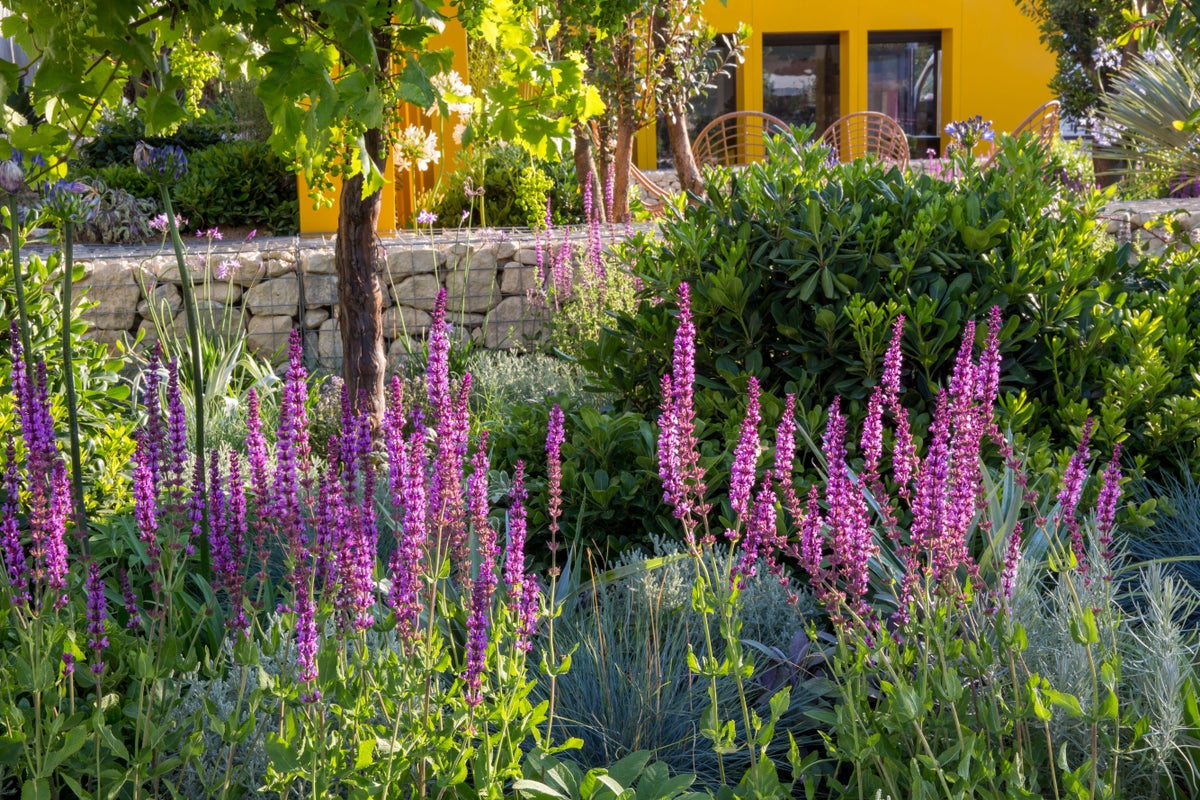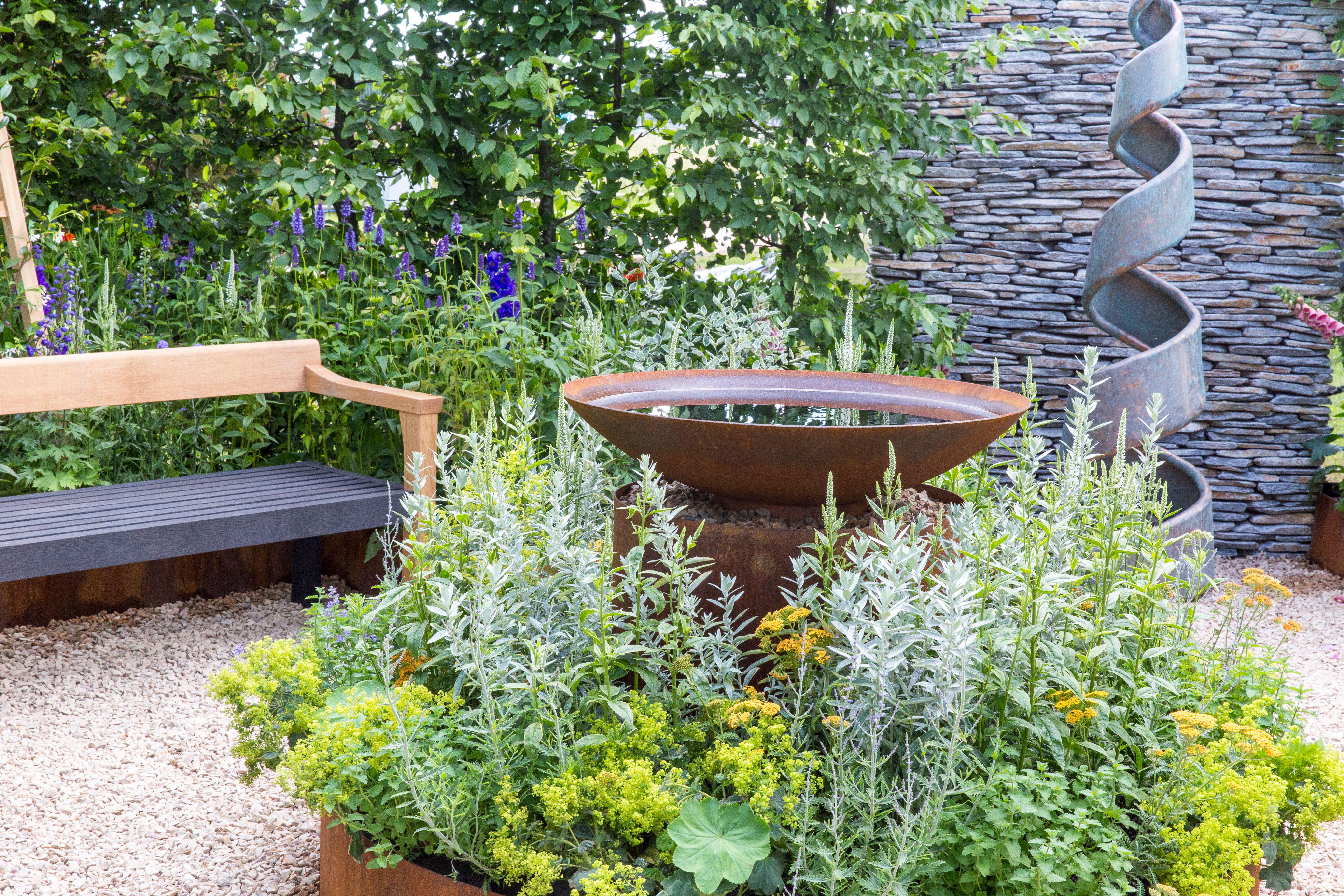
Gardeners will continue to try to adapt to climate change in the New Year, with trends moving towards more versatile plants that can withstand weather extremes, experts are predicting.
Peat-free growing and the war on plastics will also continue in 2024 and beyond.
“I think there will be a continued backlash against plastic in lawns, pots, potting compost, and packaging,” says Fiona Taylor, CEO of horticultural charity Garden Organic.
“I also hope the debate around native and non-native species will become more nuanced – as we believe a wide diversity of plants that includes both is important.”
Versatile plants
“Really versatile plants are going to be the name of the game,” says plantswoman, teacher, author and TV gardener Sarah Raven, whose new book A Year Full Of Pots (Bloomsbury, £27) is published on March 14.
“Things that are happy in extreme cold, wind, heat, drought, wet, which are strong and flexible, will be popular. Rosemary springs to mind. It will put up with exposure, drought and doesn’t mind a bit of rain.”
Some shrub roses, including the bigger ones like Rosa moyesii ‘Geranium’, are versatile, as are some annuals and biennials that come from harsh environments, she notes.
“I think pelargoniums are going to be increasingly used because they are so good with drought, but obviously not hardy so you have to bring them under cover.
“Lots of hardy annuals like Salvia viridis ‘Blue’ and Scabiosa atropurpurea ‘Black Cat’ are incredibly versatile, as are snapdragons.”

Plants for pollinators
“There’s going to be increasing concentration on plants for pollinators, so I think the big blousy dahlias are going to be less at the top of the agenda, but more focus on the singles, the anemone flowered group and the collarettes,” says Raven.
“They are all good for nectar and the anemone group are good for pollen. They are particularly good for butterflies, which are the most visible and popular of our pollinators.”
Dark hues
We’ll be shifting towards darker hues, deep purples, rich reds, and moody blues, punctuated by a select few vibrant coloured plants for a striking contrast, predicts Leigh Barnes, Jacksons Fencing’s garden expert.
“Dark foliage in intense shades of purple or brown will take centre stage, while a simple swap from light to dark-coloured plant pots promises an instant garden upgrade,” he says.
Attention to soil
“People are becoming incredibly aware of what goes under the soil as well as what goes on above it, so I think there will be attention to mycorrhizae and using mycorrhizal powders to add to your soil for great planting and also to minimise (the need for) digging,” Raven says.
Peat reduction
Catherine Dawson, Garden Organic trustee, is predicting that the move away from peat will continue, as many retailers and growing media manufacturers are now so committed to peat-free products.
“Only 17% of retail growing media was made from peat in 2022, so quite a lot of progress has been made.”

Rewilding debate
Will rewilding be out? Raven says ‘wilding’ is a better term. “My garden is full of biodiversity. The thing about rewilding is that people tend to associate that with a countryside scale.
“It’s better to think of wilding your garden and allowing things to be a bit more relaxed, and definitely not using chemicals. We can find another way, another word, which is just loosening our garden to be more accepting of a slightly less immaculate addiction.”
Landscaping
“Increasingly we will have a Mediterranean theme because of summer droughts, but it’s feast or famine with water. Storing water is unbelievably important so that if you have a long, dry spell you are prepared,” says Raven.
Natural lawns
“I think fewer people will want to see the ecological desert of a perfect lawn, maintained by high inputs of fertiliser and weedkillers, and instead turn to more organic methods of lawn care,” says Anton Rosenfeld, Garden Organic’s research manager.
He hopes people will become more accepting of weeds in lawns.
“Plants such as dandelions, white clover and self-heal (Prunella vulgaris) are all good sources of pollen and nectar for a range of insects. You can gradually convert your lawn to a more biodiverse habitat without having to dig it up and start again. Ease off on the mowing, avoid over-feeding (which encourages grasses to dominate) and plant some perennial wildflowers and bulbs in selected areas,” he suggests.
Biodiversity boosters
Traditional cottage-style gardens, with their wild meadow charm and space for cultivating home-grown produce, are poised for a resurgence, predicts Barnes.
“These gardens, abundant with a diverse array of plants and pockets of untamed beauty, provide crucial havens for local wildlife.”
Hints of nostalgia
“In interior design, maximalist colourful design is the thing at the moment and I can see that moving outside,” predicts interior landscape designer Ian Drummond.
He thinks chrysanthemums may make a comeback. “In tough times it’s reassuring to have that nostalgia, with strong colours.
“I can see over-the-top amounts of colour in an unstructured way. There’s a much more natural unstructured approach, with clashing colours and vibrancy.”
Edible elements
People will continue to grow their own, not only because of the cost-of-living crisis, but also because of the pleasure it gives, and they will be mixing ornamental veg in with flower borders to show off their vibrant colours and architectural effects of vegetable plants, he says.
“I think people will be looking to grow more perennial veg in 2024 due to climate change and the continued unpredictable weather, as these plants will better withstand the changes and extend the harvesting season,” adds Emma O’Neill, Garden Organic’s head gardener.
“Biodiversity will be pushed by all sectors and I’m hopeful more people will plant lots of flowers in their organic vegetable patches to encourage pollinators and natural predators.”
Natural furniture
“Reclaimed or weathered wood structures will grace gardens, lending texture, roughness, and a palette of neutral tones,” says Barnes. He also predicts that rust accents in frameworks, raised beds, water features and other ornaments will be popular.
“Corten steel, renowned for its weathered look, is a favourite among designers, forming a protective layer of rust that stands the test of time. Whether in the form of a raised bed or a distinctive water feature, this trend offers a captivating contrast to other elements of the garden.”
Drummond predicts: “Wooden furniture will be popular but people will also be upscaling existing furniture, painting it brighter colours. That reflects on where interiors are going.”







